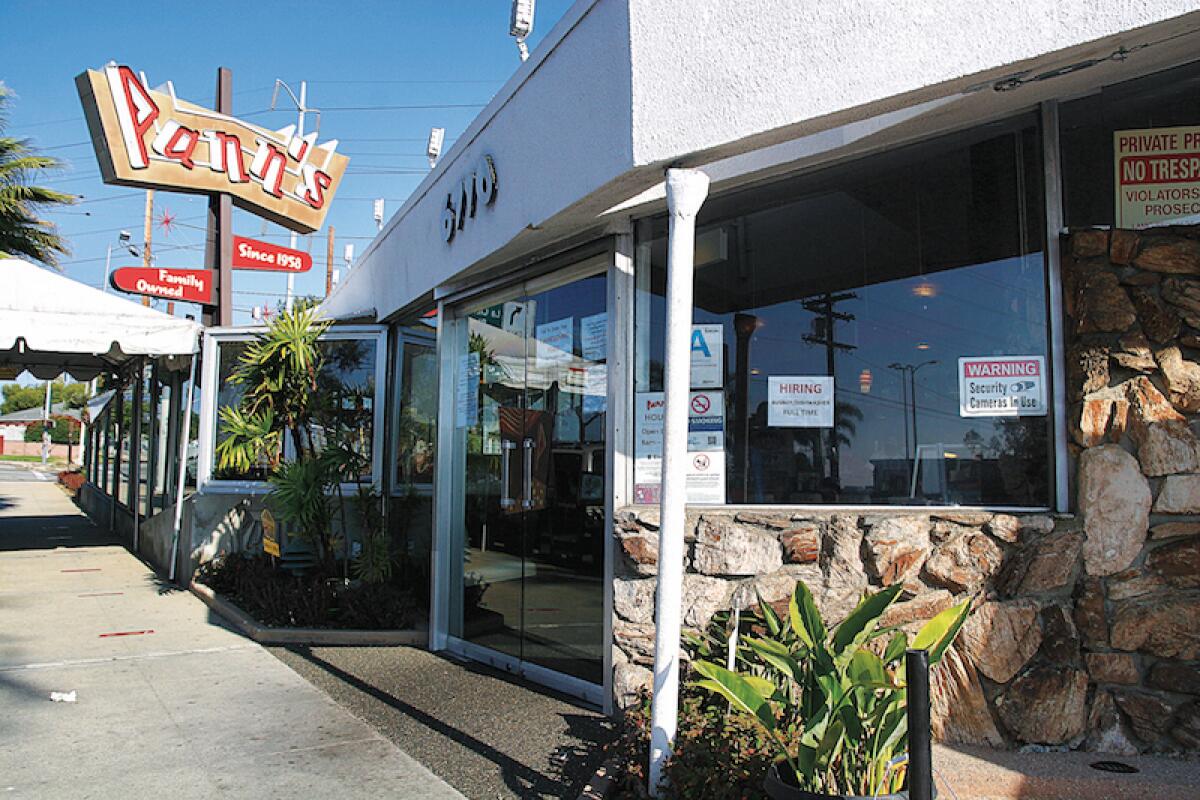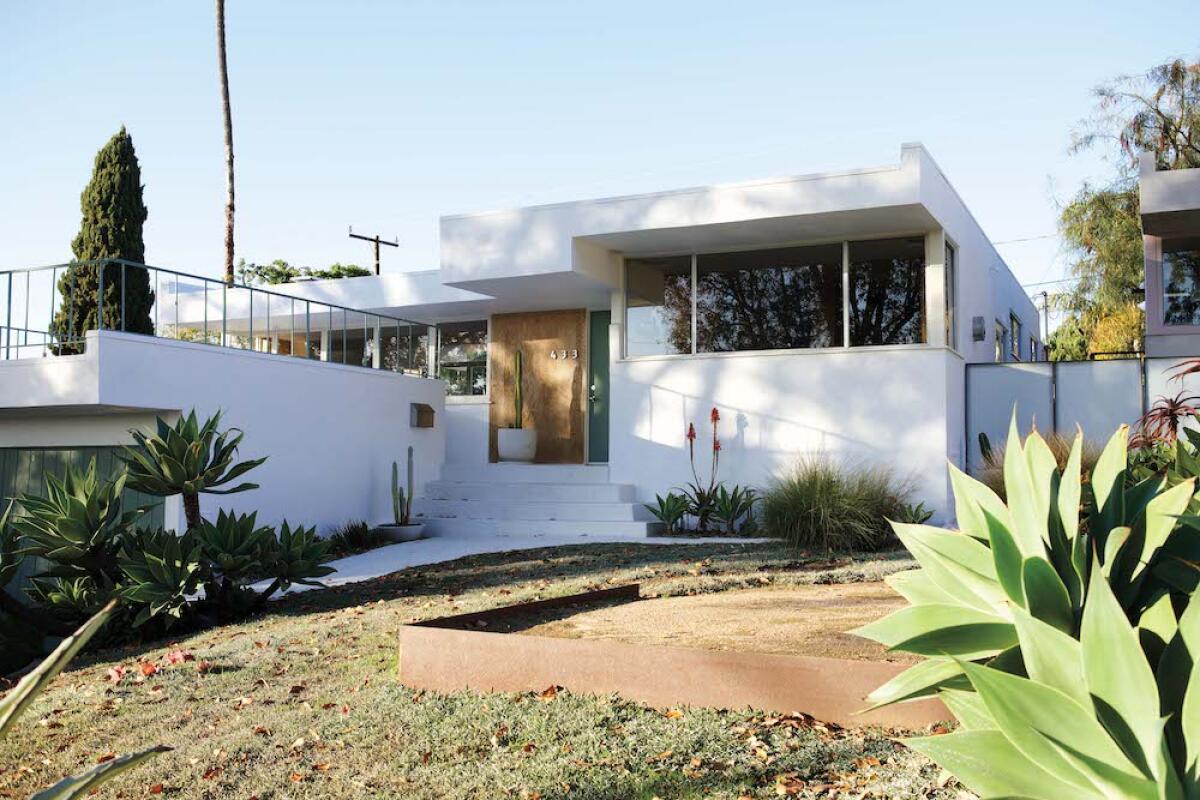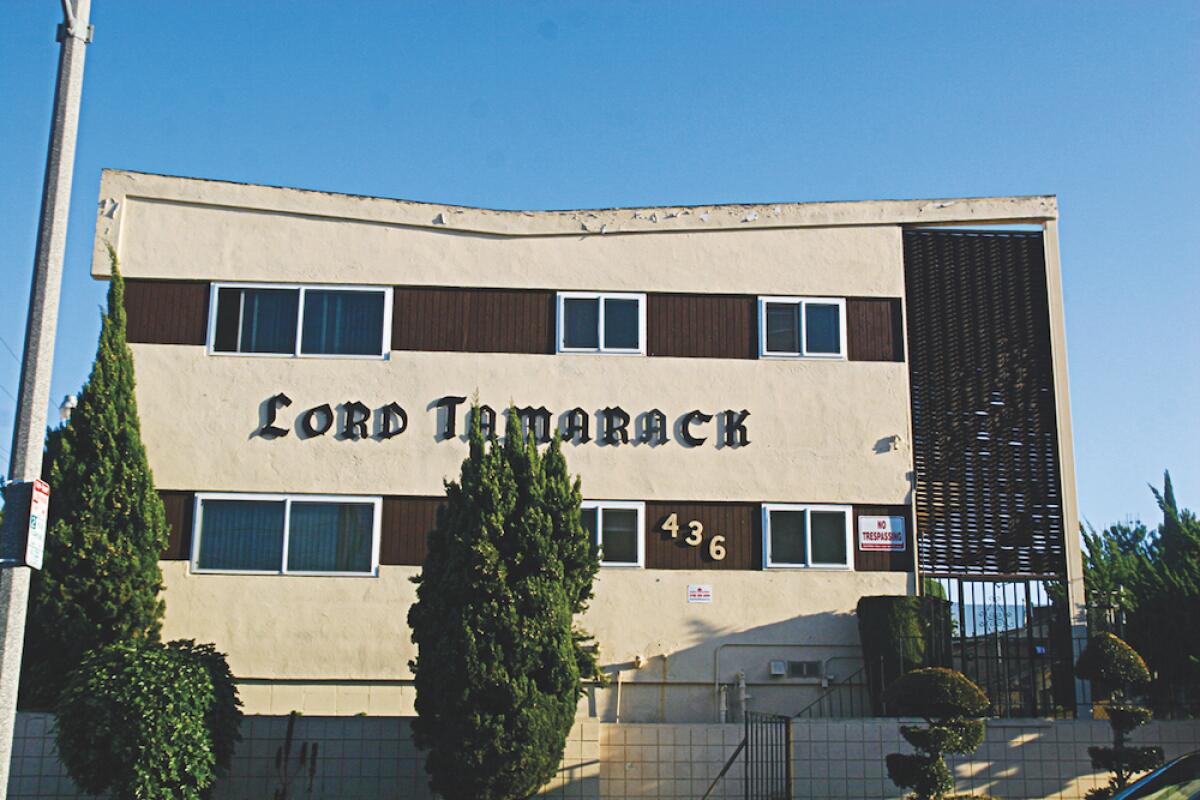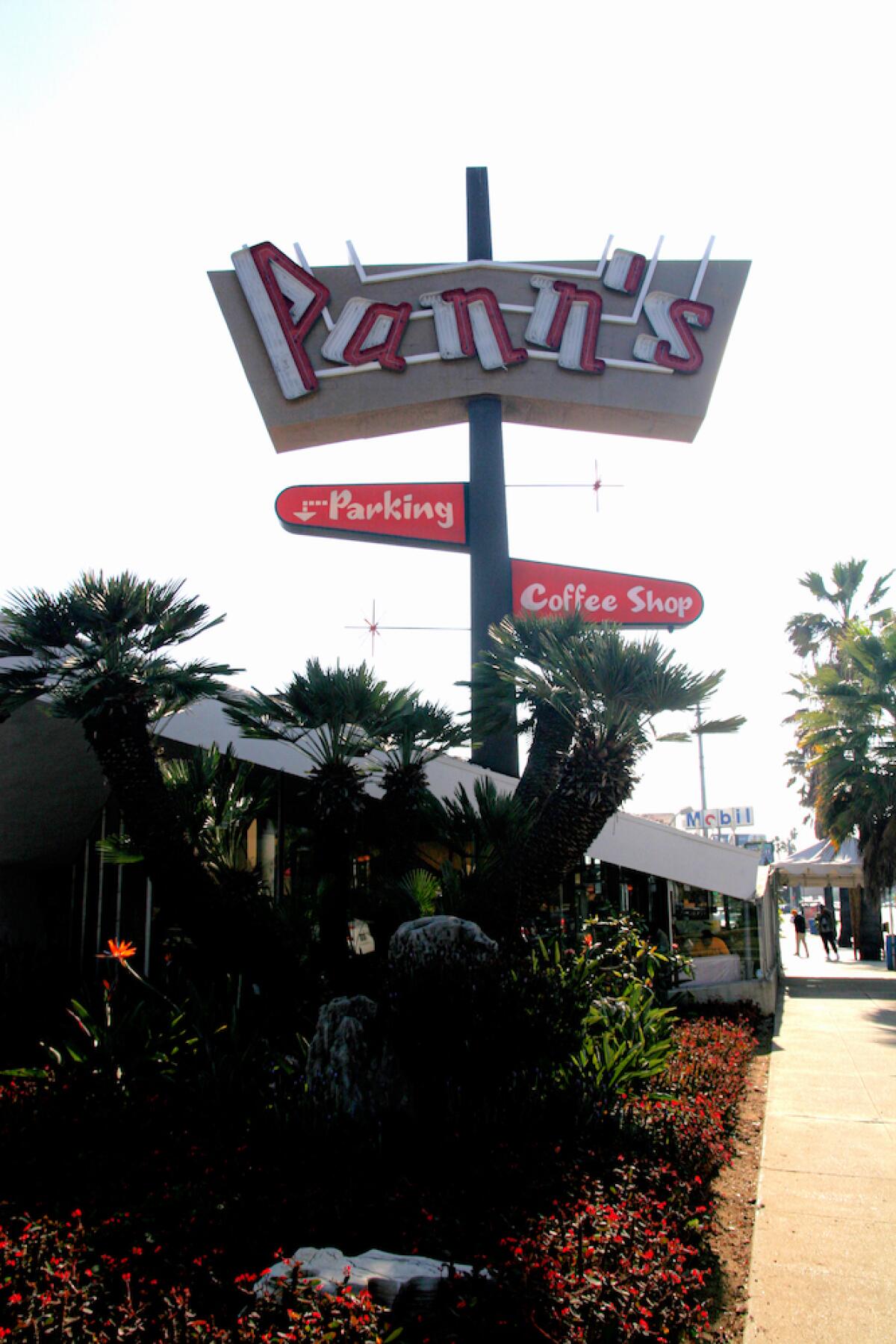Varied Movements, One Vision – Mid-Century (and a Dash of Whimsy) Dot Inglewood

Waves of people moved to Los Angeles seeking the temperate climate and job opportunities from the 1940s through the 1960s. They all needed places to live and raise their families; hundreds settled in Inglewood.
Inglewood’s wartime and postwar housing growth coincided with the domination of the Modernist movement in architecture. Unlike the classic and decorative building styles such as Mission, Tudor, and Victorian, modernist structures could be built cheaply and quickly.
The Modernist movement is a broad design category with several style variants, said Luis Hoyos, a professor of architecture at the Cal Poly Pomona College of Environmental Design. Most familiar is the mid-century modern school, which has left its minimalist legacy in single-family homes, apartments and commercial buildings throughout the city.
The building style is characterized by clean, straight lines, low, flat roofs, and lots of large windows for natural light and fresh air, Hoyos said. While the outward appearance of a mid-century house is simple and streamlined, the interiors offer livable comfort and efficiency.

Inglewood has some outstanding examples of modest mid-century modern homes designed by one of the movement’s master architects, Rudolph Schindler, and an associate, E. Richard Lind.
While Schindler is best known for the elaborate mansions he designed for wealthy clients, he wanted to produce inexpensive homes that would be affordable for middle-class families. In 1939 and 1940, he designed and had built three houses in Inglewood using updated framing techniques and cheap, easily available materials. These homes are known as “Little Moderns” because they are less than 1,000 square feet in size. They have open floor plans and outdoor “rooms,” or enclosed gardens, which are still desirable today. There were also built-in desks and storage drawers made of plywood. The pleasing, uncluttered design as well as the economics of the construction led builders to copy the style in their new housing developments, although not necessarily with the same elegance and expertise demonstrated in the Schindler homes.
Hoyos said Los Angeles has the highest number of occupied mid-century residences in the world. They are still appreciated for their simplicity and sustainability.

The same cannot be said about a type of apartment building spawned by the affordable mid-century construction techniques. “Dingbats” refer to two- or three-story, shoebox-shaped buildings designed to be built on a single, standard residential lot, using the same types of materials and construction techniques as a two-story family house. They were not only inexpensive to build, they had no need for typical apartment building features like elevators and parking garages. Tenants had private entrances and a parking spot for one car; often, cars had to park head-in right in front.
Some architectural critics derided Dingbats as parking structures with apartments built on top. Nonetheless, the building craze swept through residential Southern California in the 1950s and ‘60s.
But why the name, Dingbats? It refers to the often-outlandish decorative trim and pretentiously themed names the landlords put on building fronts to distinguish their apartment building from others of identical construction. While subsequent zoning laws put a stop to the Dingbats, there are still a large number of these colorful, cookie-cutter buildings scattered through Inglewood neighborhoods, well-preserved and still bearing their original details and faraway-sounding names.
The mid-century modern style also lingers in the city’s commercial buildings, including the Mausoleum of the Golden West, on the grounds of the Inglewood Park Cemetery, 720 E. Florence Avenue, and the original Pepperdine University campus at 7901 S. Vermont Avenue, now occupied by the Crenshaw Christian Center. The Academy Theater, built in 1939, sports a tall neon spatial tower and is an example of Classic Art Moderne style. Now used as a church, the old movie house is anchored at 3141 W. Manchester Boulevard.

Finally, several restaurants and car washes erected in the ‘50s and ‘60s celebrated Modernism with geometric shapes and a bold use of glass, steel and neon, done in the playful, almost joyous space-age futuristic style we now call “Googie,” after the former L.A. diner that exemplified it.
Still preserved in the Inglewood area and nearby are Pann’s Restaurant, 6710 La Tijera Boulevard, from 1958; Simply Wholesome, a health food store and restaurant that took over a 1957 coffee shop at 4508 W. Slauson Avenue; Cafetales, a South American restaurant, operating in a 1958 coffee shop at 115 S. La Brea Avenue; and Jet’s Car Wash, 941 W. Manchester Avenue, built in 1961.